The First Dog Show
Modern dog shows can trace their roots to the town hall in Newcastle, England in 1859. That summer Setters and Pointers competed in a minor event as part of an agricultural show, and though it was a humble beginning, it was a precursor to a movement that would grow significantly. More shows followed in England, and by 1874 the movement included the United States. In that year the Illinois State Sportsmen's Association sponsored a dog show in Chicago, and three years later the Westminster Kennel Club held a more formal show in New York, now one of the longest continuously held sporting events in the United States.
Why dog shows? The unique relationship between man and dog and the opportunity to witness the results of purebred dog breeding has resulted in the exponential growth of dog shows. This human fascination with canine perfection, and the competition it fostered, made such shows ever more popular. At the same time, however, issues arose surrounding rules, standards, health issues, and judging. There was a need for organization and control.
The First Dog Club
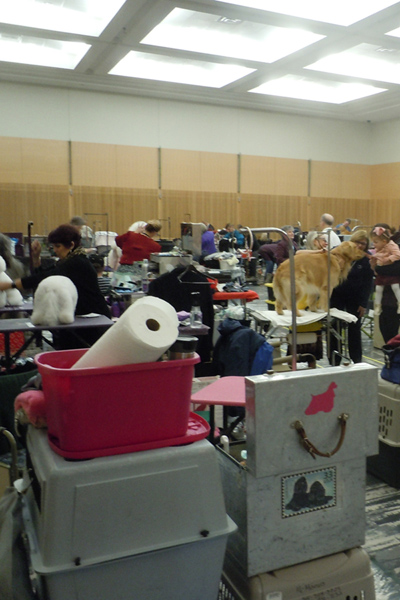
The first dog club is often credited to the Brits, who established the Bulldog Club in 1864, which didn't last very long. Perhaps it lacked the tenacity of its namesake. The more permanent Kennel Club was founded on April 4th, 1873 by S.E. Shirley and associates, for the purpose of governing dog shows and related activities. It took a bit longer in the States, as the first American effort was sponsored by the Westminster Kennel Club in 1877.
On both continents the motivation was to bring a semblance of control and organization to the burgeoning activity of purebred dog breeding and showing. Dog shows of varying sizes, quality, and reputation were becoming more frequent in both England and the United States, but for those desiring a higher plateau of dog show legitimacy the lack of breed standards, as well as inconsistent judging, were ongoing issues. The industry needed to evolve.
Conformation
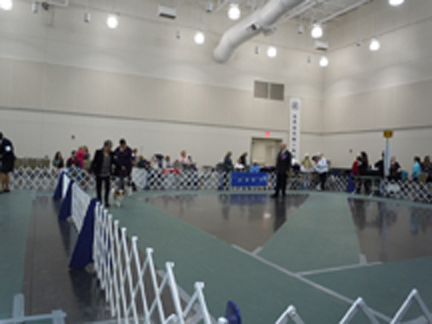
Conformation is the degree to which a purebred dog meets the ideal for its breed in terms of appearance and behavior. These strict rules of dog appearance and bearing—the breed standard—are determined by a centralized governing body. In the United States the American Kennel Club, or AKC, was created for this purpose in 1884 by agreement of several dog clubs. The effort was a success, and today in the U.S. the AKC is the predominant entity for establishing breed standards, and also maintains a registry of dogs that meet those standards.
As the bridge between dog clubs and dog shows, conformation supports consistency in both breed standards and judging. Of the 340 dog breeds known throughout the world, the AKC recognizes around 200. Each breed has a well-defined standard, which specifies the ideal set of appearances and behaviors for that breed. Each breed also belongs to a Group. Under the AKC these groups include the Terrier Group, the Toy Group, the Working Group, the Sporting Group, the Hound Group, the Non-Sporting Group and the Herding Group.
AKC judges are only certified after a rigorous screening process, which stipulates that "breeders who are prospective judges have a minimum of 12 years experience in their breed, having bred and raised at least five litters in their own home, and breeding or owning four or more champions from those same litters. In addition, they must pass tests on dog anatomy and ring procedure; have been a ring steward at a minimum of six shows; have judged the breed at six sweepstakes or match or open shows; attended a day-long basic-judging institute, and complied with occupational eligibility requirements."
In the world of the dog show, humans as well as dogs must conform.
Modern Dog Shows
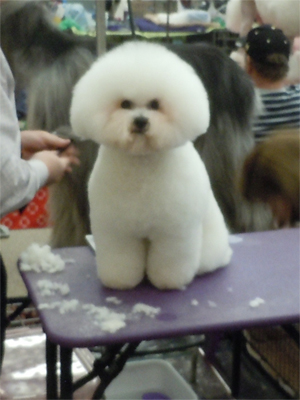
A conformation event, or dog show, is a contest to determine which dog most closely approaches the ideal of the breed standard. During competition each dog competes in a Class within its Group. The Classes defined by the AKC for competition at dog shows are Puppy, 12-18 months old, Novice, Amateur-Owner-Handler, Bred-by-Exhibitor, American-bred, and Open. Depending on the show there can be further subdivisions. Winners in each Class move on to compete against other Class winners within the Group, and winners of each Group compete for Best In Show.
In the United States there are three major dog shows annually, and numerous local dog shows. The AKC National Championship, the National Dog Show, and the Westminster Dog Show are the big three.
AKC National Championship. Sponsored by the American Kennel Club, this show includes Best Bred-by-Exhibitor competition, the AKC National Owner-Handled Series Finals, the AKC Royal Canin National All-Breed Puppy and Junior Stakes, and the NADD/AKC Dock Diving competition. Also included are Agility and Obedience competition, so this is not a conformation-only show, but has something for a variety of canine competition enthusiasts. In 2021 it will be held in Orlando, Florida.
National Dog Show. The National Dog Show is run by the Kennel Club of Philadelphia. It is an all-breed benched conformation show, which means that the dogs must be kept in a special benched area when not competing or using the rest area. Held in Philadelphia, the show is broadcast on television on Thanksgiving day. The Kennel Club of Philadelphia Dog Show, as it was originally known, has been in existence since 1879.
Westminster Dog Show The Westminster Kennel Club Dog Show, hosted by the Westminster Kennel Club in New York City, is the second-longest, continuously held sporting event in the United States. It is a benched conformation event for purebred dogs, but also includes Agility and Obedience events for all breeds. Held in January, the week-long event is televised through various streaming and other outlets.
Local Dog Shows Most dog shows are local events, and range in size from small, single breed affairs, to large multi-day all-breed events. The Erie Kennel Club All-Breed Dog Show (Erie, Pa.) is an example of a large, local, all-breed dog show. With full access to the showing areas, the grooming areas, and the vending areas, this two-day show offers the opportunity to observe many different breeds, and to mingle with purebred enthusiasts, owners, and spectators. It is a good example of a well-run local dog show, which I attended in January of 2020. Some of the pictures in this article are from that show.
Modern Dog Clubs
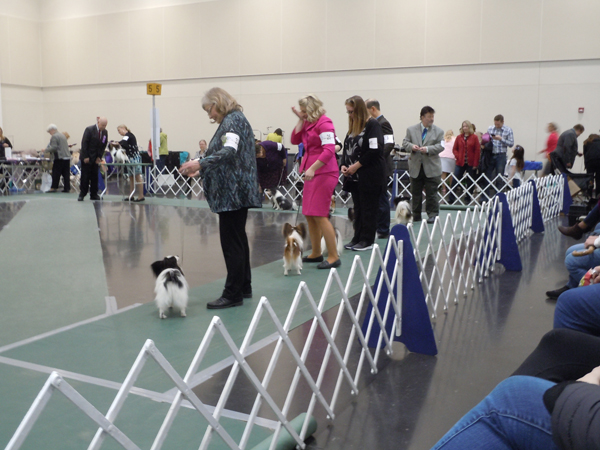
There are two distinct types of dog clubs, or kennel clubs, in the United States. The larger, most well-known clubs support the breeding of purebred dogs and the maintenance of dog registries, and also establish breed standards, accreditate judges, and promote both purebred and general dog health and ownership. Notable examples in the United States are the American Kennel Club (AKC, formed 1884) and the United Kennel Club (UKC, formed 1898).The UKC also registers dogs from outside the U.S.
Other such clubs include the Fédération Cynologique Internationale (formed 1911), the Kennel Club (formed 1873, UK), the New Zealand Kennel Club (1886), the Canadian Kennel Club (1888), the United Kennel Clubs International (Germany, 1976), the Australian National Kennel Council (ANKC, 1958), as well as numerous other clubs and registries throughout the world.
Smaller, local dog clubs generally share the same goals as the large clubs, but are more hands-on, and typically maintain facilities to support training of purebred dogs in preparation for dog shows. This includes education, agility training facilities, and other support aspects. In some cases the local club is dedicated to a single breed, and in others it is all-breed, or some combination. For the beginner as well as the expert a local dog club provides training space, offers information about dog show rules and regulations, and facilitates camaraderie among purebred dog enthusiasts. There are now thousands of dog clubs in America. Most are not simply gathering places for dog play. Rather, they are gathering places for enthusiasts interested in preserving the quality of purebred dogs.
More About the American Kennel Club
The AKC is the largest kennel club in the United States, and it maintains a substantial registry of purebred dogs. Founded in 1884. according to its website its objective is to "advance the study, breeding, exhibiting, running and maintenance of purebred dogs." The standardized set of rules and regulations gives legitimacy to conformation and other events and specialty shows. Over 5000 local dog clubs are associated with the AKC, both to participate in the standardization, and because of the shared goals and objectives regarding purebred dog breeding and showing. The stated core values of the AKC are:
• We love purebred dogs
• We are committed to advancing the sport of the purebred dog.
• We are dedicated to maintaining the integrity of our Registry.
• We protect the health and well-being of all dogs.
• We cherish dogs as companions.
• We are committed to the interests of dog owners.
• We uphold high standards for the administration and operation of the AKC.
• We recognize the critical importance of our clubs and volunteers.
More About The Erie Kennel Club
The Erie Kennel Club in Erie, Pa. is an example of a robust local dog club with an early origin. It is the tenth oldest all-breed member club of the AKC and the oldest in Pennsylvania. Incorporated in 1906, the club is very active, and sponsors an annual dog show, the Erie Kennel Club All-Breed Dog Show. According to its website the objectives of the club are as follows:
• To further the advancement of purebred dogs.
• To encourage sportsmanlike competition.
• To conduct sanctioned matches, conformation shows, companion and performance events under the rules of the American Kennel Club.
This closely mirrors the intent of early dog club founders, and the Erie Kennel Club is a prime example of the evolution of dog clubs. Their annual dog show is a testament to organization and good will among dog owners and spectators alike, while their modern facilities support those interested in purebred dog breeding, agility, and related activities.
The Canine Perspective
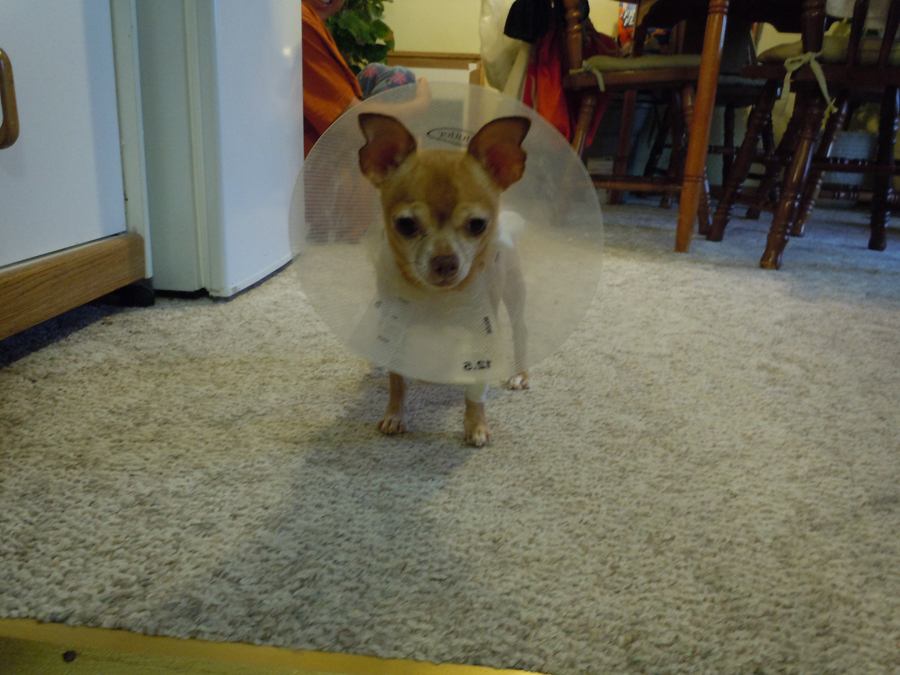
What about the 200-pound Papillon in the room? How do dogs feel about all this? Although there is ongoing sporadic research concerning canine intelligence, popular fiction demonstrates the wider human fascination with the canine thought process. There are many such examples, such as Buck in The Call of the Wild, Randolph in A Dog About Town, and even Jip in The Story of Doctor Dolittle. Speculation concerning the canine opinion is clearly a subject of human interest and consideration. Given a choice, would dogs answer the call to perform, or the call of the wild? As the author of a novel focused on the canine perspective, I can state with confidence that the answer is yes.
Still, if the purpose of the dog show is partially to showcase canine obedience, then allowing for independence of thought from the star of the show may be a case of Toto pulling back the curtain. Like fiction, one can only speculate.
Conclusion

An affinity for the breeding of purebred dogs gave rise to both dog clubs and dog shows. In the beginning both were limited and chaotic, lacking standards and consistency. Although the dog show came slightly before the dog club, in reality they have grown and evolved together since the mid-1800s, and now exist in a symbiotic relationship. Many dog clubs sponsor dog shows, and train participants in navigating the often confusing rules and regulations. The American Kennel Club has emerged as the premier administrative dog club in the United States, and local dog clubs tend to affiliate with the standards it represents.
Although not all dog club members participate in dog shows, and not all dog show participants are members of a dog club, there is a link that bonds them, which is the love of dogs. For dog clubs this largely encompasses purebred dog breeding, agility, and obedience training. Its continued popularity is evidenced by the existence of thousands of local dog clubs and dog shows, as well as widely viewed national dog shows, such as the AKC National Championship, the National Dog Show, and the Westminster Dog Show.
The dog show and dog club movement has now evolved into a highly organized and mutually supportive industry, fostering opportunities for dog enthusiasts to partake in both local and national activities. The human fascination with dogs and dog shows has even seeped into popular fiction, further evidence that the dog club-dog show symbiosis is here for the long haul.
About the Author

Welcome! My name is William R. Vitanyi, owner of Bayla Publishing. The books, apps, and articles on this site are my own, and I created Bayla Publishing, and this site, for their publication.
Why Bayla? In the early nineteen hundreds Bela Vitanyi passed through Ellis Island, and was asked his name. He responded "Bela" (pronounced "Bayla") which sounded like "Bill", so it was declared that his name would henceforth be Bill, short for William. Apparently he approved, naming one of his sons William, which started a family tradition of sorts.
In an homage to Bela, my grandfather, the intrepid soul who lost his name at Ellis Island, and to phonics, I named my company Bayla Publishing.
Connect with Bayla Publishing
Connect with William R. Vitanyi
Vitanyi
Follow @vitanyi
To contact the author send email to: Contact William R. Vitanyi
We are a participant in the Amazon Services LLC Associates Program, an affiliate advertising program designed to provide a means for us to earn fees by linking to Amazon.com and affiliated sites.

© 2025 Bayla Publishing LLC